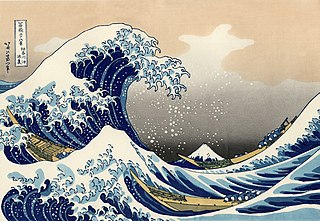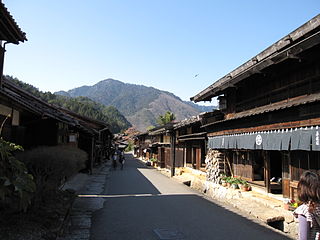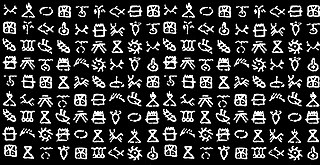
Year 300 (CCC) was a leap year starting on Monday of the Julian calendar. At the time, it was known as the Year of the Consulship of Constantius and Valerius. The denomination 300 for this year has been used since the early Middle Ages / Medieval period, when the Latin language term / abbreviation "Anno Domini" for the calendar era became the prevalent universal / worldwide method for naming and numbering years. First beginning in Europe at the end of the Roman Empire (after the split of the Western Roman Empire and Eastern Roman Empire in the early Middle Ages / Medieval period.

The Tokugawa shogunate, also known as the Edo shogunate, was the military government of Japan during the Edo period from 1603 to 1868.

The Edo period, also known as the Tokugawa period, is the period between 1603 and 1868 in the history of Japan, when Japan was under the rule of the Tokugawa shogunate and the country's 300 regional daimyo. Emerging from the chaos of the Sengoku period, the Edo period was characterized by economic growth, strict social order, isolationist foreign policies, a stable population, overall peace, and popular enjoyment of arts and culture, colloquially referred to as Ōedo.

Genbun (元文) was a Japanese era name after Kyōhō and before Kanpō. This period spanned the years from April 1736 through February 1741. The reigning emperor was Sakuramachi-tennō (桜町天皇).

Handan is a prefecture-level city located in the southwest of Hebei province, China. The southernmost prefecture-level city of the province, it borders Xingtai on the north, and the provinces of Shanxi on the west, Henan on the south and Shandong on the east. At the 2010 census, its population was 9,174,683 inhabitants whom 2,845,790 lived in the built-up area made of 5 urban districts. Yongnian District in Handan and Shahe City in Xingtai have largely formed into a single conurbation.

Ema are small wooden plaques, common to Japan, in which Shinto and Buddhist worshippers write prayers or wishes. Ema are left hanging up at the shrine, where the kami are believed to receive them. This is particularly evident at shrines such as the at Ikoma Shrine, where ema more often than usual indicate great despair or tragedy in one's life and show a heavy dependence on divine intervention. However, ema have been hung up for many other purposes, such as advertisements for certain Kabuki groups at shrines such as Naritasan Shinshôji in the Chiba prefecture. Typically 15 cm (5.9 in) wide and 9 cm (3.5 in) tall, they often carry images or are shaped like animals, or symbols from the zodiac, Shinto, or the particular shrine or temple. In ancient times, people would donate horses to the shrines for good favor; over time this was transferred to a wooden plaque with a picture of a horse, and later still to the various wooden plaques sold today for the same purpose. Once inscribed with a wish, ema are hung at the shrine until they are ritually burned at special events, symbolic of the liberation of the wish from the writer. Ema can be hung up either for one's personal benefit, or the benefit of another. There is no specified format for creating ema. Typically, one side has the wishes inscribed in text, and the other is left for imagery should it be desired.

Many artistic influences transited along the Silk Road, especially through the Central Asia, where Hellenistic, Iranian, Indian and Chinese influence were able to interact. In particular Greco-Buddhist art represent one of the most vivid examples of this interaction. As shown on the 1st century CE Silk Road map, there is no single road but a whole network of long-distance routes: mainly two land routes and one sea route.

Kanpō (寛保) was a Japanese era name, also known as Kampō, after Genbun and before Enkyō. This period spanned the years from February 1741 through February 1744. The reigning emperor was Sakuramachi-tennō (桜町天皇).

Tenpyō-kanpō (天平感宝) was a Japanese era name after Tenpyō and before Tenpyō-shōhō. This period spanned mere months, April through July 749. The reigning emperor was Shōmu-tennō (聖武天皇).

Tenpyō-shōhō (天平勝宝) was a Japanese era name after Tenpyō-kanpō and before Tenpyō-hōji. This period spanned the years from July 749 through August 757. The reigning empress was Kōken-tennō (孝謙天皇).

Shukuba (宿場) were staging post stations during the Edo period in Japan, generally located on one of the Edo Five Routes or one of its sub-routes. They were also called shuku-eki (宿駅). These stage stations, or "stage station towns" developed around them, were places where travelers could rest on their journey around the nation. They were created based on policies for the transportation of goods by horseback that were developed during the Nara and Heian periods.
Christianity is the dominant religioninPalau, practiced by around 72.8% of the total population, according to the 2022 census. Freedom of religion is enshrined in Palau's constitution.

Kaidā glyphs are a set of pictograms once used in the Yaeyama Islands of southwestern Japan. The word kaidā was taken from Yonaguni, and most studies on the pictographs focused on Yonaguni Island. However, there is evidence for their use in Yaeyama's other islands, most notably on Taketomi Island. They were used primarily for tax notices, thus were closely associated with the poll tax imposed on Yaeyama by Ryūkyū on Okinawa Island, which was in turn dominated by Satsuma Domain on Southern Kyushu.

Tenshu is an architectural typology found in Japanese castle complexes. They are easily identifiable as the highest tower within the castle. Common translations of tenshu include keep, main keep, or donjon.
Dōmei Yakazu was a Japanese physician who contributed to the restoration of kampo medicine in Japan. In 1979, he was awarded the lifetime achievement award by the Japanese Medical Association for his contributions to oriental medicine.
The Five Public Notices were five officials bulletins posted on 7 April 1868 aimed at the common people, and which constituted the first decrees put out by the Meiji government of the Empire of Japan.

Katō Hiroharu, alternatively named Katō Kanji, was a Japanese naval officer during the Russo-Japanese War and World War I. The first name 'Kanji' was used in his later life after he became famous, likely just before he was promoted to rear-admiral. He served as the Chief of Navy General Staff from 22 January 1929 to 11 June 1930.

Kawamata Tsuneyuki was a Japanese ukiyo-e artist and founder of the Kawamata school of art. Like many early ukiyo-e artists, Tsuneyuki and his school specialized in painting (nikuhitsu-ga) rather than designing woodblock prints.

Kanpō is the official gazette of the Japanese government. Its official publication started in 1886, from the National Printing Bureau of the Ministry of Finance.














